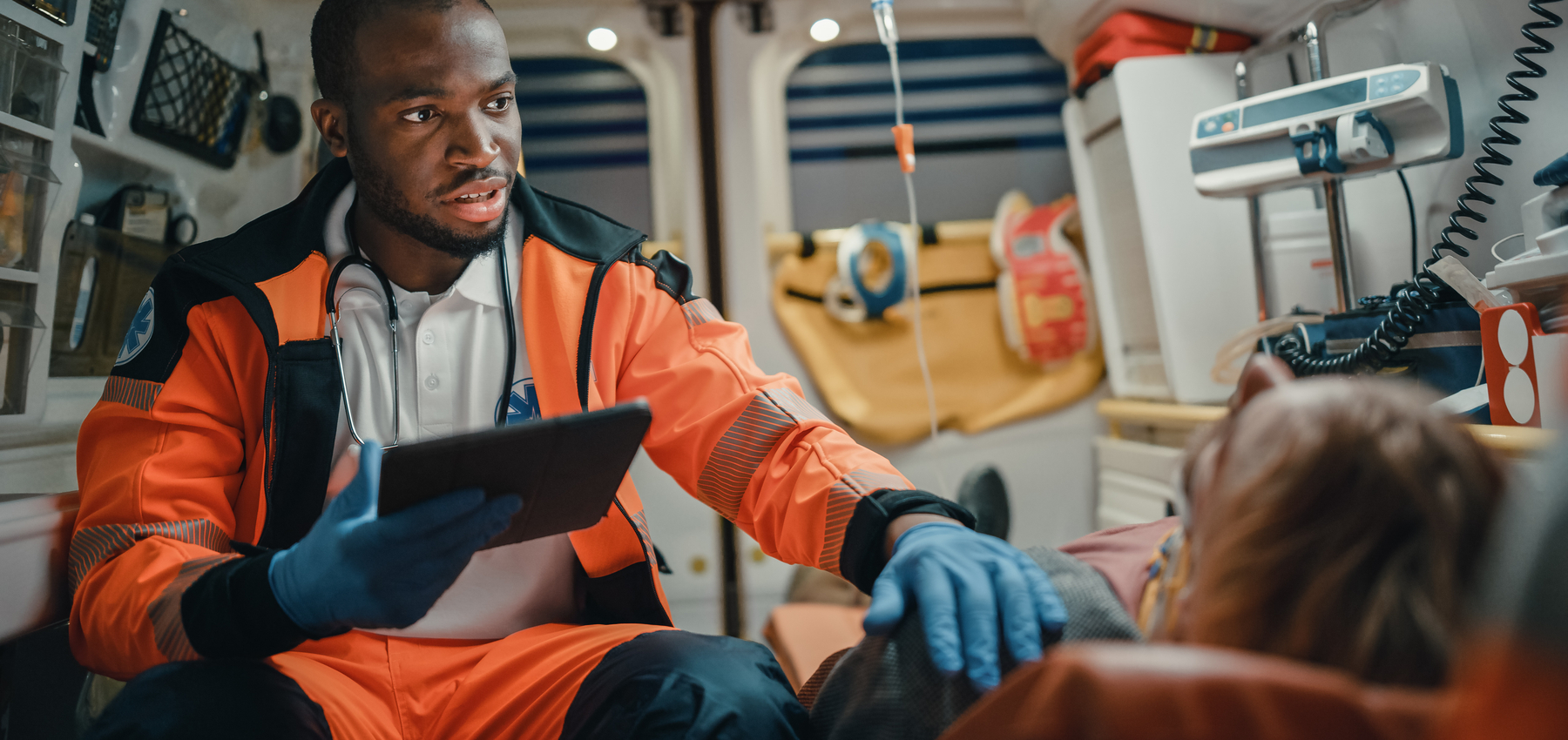Life is full of unexpected events – sometimes good and sometimes bad. As a newcomer settling in Canada, it helps to be prepared for any emergencies. Finding the necessary support in a new place can seem intimidating or confusing. Learn the basics of creating an emergency plan and familiarize yourself with the steps to take care of yourself and your loved ones.
In this article:
What is an emergency?
An emergency is an unexpected situation that poses an immediate risk to health, life, property, or the environment. Most emergencies warrant immediate intervention to prevent the situation from worsening.
There are three main types of emergencies:
- Danger to health or life: These are situations that can endanger the health or lives of people involved. Examples include medical emergencies, traffic accidents, injury caused to a child while playing, a fire breaking out in your building, car breakdown in a rural area during winter, power outage caused by a blizzard, natural disasters such as earthquakes and floods, disease outbreaks or pandemics, etc.
- Danger to property: A situation (such as theft, fire, etc.) that can damage and/or cause loss of property or tangible assets, resulting in monetary loss.
- Danger to the environment: This is a situation that affects the natural environment and creatures living within it. Examples: forest fires, oil spills, etc.
How to prepare for an emergency
One of the ways to prepare is to have a plan, and to ensure that all members of the family know what to do in case of an emergency.
1. Know the risks and have a plan
Although the consequences of various disasters can be similar, knowing the risks in your region can help you prepare better. Across Canada, there are a number of hazards, such as floods in many provinces, earthquakes in British Columbia, blizzards in various parts of Canada and tornadoes in some parts of Ontario. In addition to natural disasters, there are other types of risks, such as power outages and industrial or transportation accidents. Some of these risks may be relevant to the community and neighbourhood where you live.
As you prepare an emergency plan, be sure to identify the location of the nearest walk-in clinic and an emergency room at a hospital because when an emergency does happen, you won’t have the headspace to go looking for this information. A couple of other things you could do are:
- Make a note of all your emergency contact’s phone numbers and store it in your wallet – this will help paramedics know whom to contact in the event of an accident.
- Familiarize yourself and your family with fire protocols. Know where to go, what the gathering points are, and understand the route to be followed to exit the building or living space.
To find out the risks and get detailed emergency readiness information for specific situations, visit GetPrepared.ca. |
2. Set up an emergency fund
Medical emergencies and financial challenges are the most likely disruptions you’ll face in your lifetime. An unfortunate or unforeseen circumstance can take a toll on your physical, mental and emotional well-being. In such situations, having the necessary finances to navigate those tough times can provide some relief, peace of mind, and give you the confidence to recover. That’s why you should plan to build an emergency fund.
An emergency fund (or a rainy-day fund) is money that’s set aside to be used during times of financial hardship or to cover unexpected expenses such as loss of income, accidents, urgent travel to your home country, treating an illness, undertaking sudden major home or car repairs, etc. It can also be useful to get out of an unhealthy/abusive relationship or a dangerous situation such as an unsafe living space. This money is usually saved in the form of cash (versus stocks, bonds, high-interest debt options, etc.) so it is easily accessible and can be used immediately.
Read Building an emergency fund: Tips for newcomers to Canada for insights on how to successfully set up an emergency fund. |
With money matters there isn’t a “one size fits all” approach as every person has a unique financial situation and varied priorities. That’s why speaking to a financial advisor is a good idea, especially as you’re navigating the financial landscape in a new country; they can help you gain financial control and plan for your emergency fund.
3. Prepare an emergency kit
An emergency kit should contain basic supplies that will help you and your family get by for at least 72 hours, should you need to. Make sure your kit is easy to carry and everyone in the household knows where it is. It’s a good idea to keep your emergency kit in a backpack, duffle bag or suitcase with wheels, in an easy-to-reach, accessible place.
Certain items from an emergency kit – such as a first aid kit – can also be useful in addressing minor accidents (like a cut, wound or injury) in daily life. |
Things to include in a basic emergency kit
|
You can buy pre-packaged emergency kits from Canadian Red Cross, the Salvation Army, or other commercial retail entities. |
What to do during an emergency situation
During an emergency, you may not have time to make alternative plans or be aware of whom to listen to for instructions. That’s why it is important to know who to call and what to do under different circumstances.
1. Calling 9-1-1
You can call 9-1-1 (where available) to seek help from the police, fire department, or get ambulance services in emergency situations only. Situations that qualify as an emergency would include medical emergencies, injuries, accidents, fires, crimes in progress or if someone’s safety, health or property is in danger. When notifying emergency services of your location, provide the exact street or civic address and nearest intersection.
You should also teach your children about the importance of 9-1-1 and how to call 9-1-1 to get help in an emergency. Explain to them what 9-1-1 is, and use concrete examples of when and when not to call. Remind them to always get to safety first before calling 9-1-1 and that they can always phone from a neighbour’s house or a pay phone. Reiterate that they shouldn’t stay where there’s danger.
2. In case of a major emergency
- Follow your emergency plan;
- Get your emergency kit;
- Make sure you are safe before assisting others;
- Listen to the radio or television for information from local officials and follow their instructions; and
- Stay put until all is safe or until you are ordered to evacuate.
3. Complying with evacuation orders
Authorities will not ask you to leave your home unless they have reason to believe that you may be in danger.
If you are ordered to evacuate, take your emergency kit, your wallet, personal identification for each family member and copies of essential family documents with you. Bring a cellular phone and spare battery or charger with you, if you have one. Use travel routes specified by local authorities. Pets are not allowed in some emergency shelters, so plan in advance for a pet-friendly location. If you go to an evacuation centre, register your personal information at the registration desk. Do not return home until authorities advise that it is safe to do so.
If you have time, call or email your out-of-town contact. Tell them where you are going and when you expect to arrive. Once you are safe, let them know. Tell them if any family members have become separated. If possible, leave a note telling others when you left and where you are.
Protecting your home: Shut off water and electricity if officials tell you to do so. Leave natural gas service on unless officials tell you to turn it off. If you turn off the gas, the gas company has to reconnect it. In a major emergency, it could take weeks for a professional to respond.
Children: Ask your children’s school or daycare about their emergency policies. Find out how they will contact families during an emergency. Find out what type of authorization the school or daycare requires to release your children to a designated person if you can’t pick them up.
4. Shelter-in-place
If you’re instructed to shelter-in-place, you must remain inside your home or office and protect yourself there. The following steps will help maximize your protection:
- Close and lock all windows and exterior doors.
- Turn off all fans, heating and air-conditioning systems to avoid drawing in air from the outside.
- Close the fireplace damper.
- Get your emergency kit and make sure the radio is working.
- Go to an interior room that’s above ground level (if possible, one without windows). In the case of a chemical threat, an above-ground location is preferable because some chemicals are heavier than air and may seep into basements even if the windows are closed.
- Using duct or other wide tape, seal all cracks around the door and any vents into the room.
- Continue to monitor your radio or television until you are told all is safe or are advised to evacuate.
The after effects of unexpected emergencies and disasters are different for everyone. Knowing what to do during and after an emergency can help reduce stress and aid in a quicker recovery. Provincial and territorial websites will usually have information on support and recovery so, be sure to check those.
Being prepared for an emergency will make it easier to cope with the situation, should it arise. Have a plan, know whom to call, where to go, and you’ll find it much easier to deal with the emergency.





